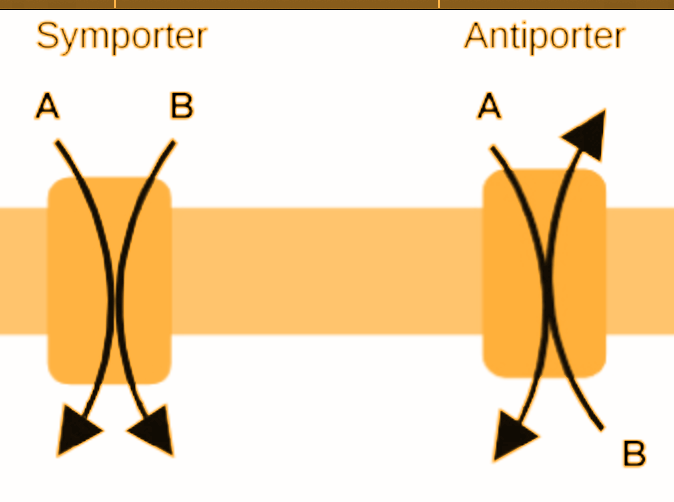
Define symport and antiport.
Answer
569.4k+ views
Hint: The gradient is a vital component of the method of diffusion. Hence, a smaller substance has to be diffused faster in comparison to large ones. Facilitated Diffusion is a passive process that includes antiport, uniport, and symport.
Complete step by step answer:
There are different types of mechanisms which are used for the transportation of the molecules. A symport is an integral membrane protein that's involved within the transport of the many different kinds of molecules across the cell membrane. The symporter works within the cell wall and molecules are transported across the cell wall at an equivalent time, and is, therefore, a kind of cotransporter. An antiport is a cotransporter and integral membrane protein involved in secondary transport of two or more different molecules or ions across a phospholipid membrane like the cell wall in opposite directions, one into the cell and one out of the cell.

Additional information:
The main factors affecting the method of facilitated diffusion are:
Temperature- because of the temperature increases, the movement of the molecules increases due to a rise in energy. Concentration- The movement of the molecules takes place from the region of upper concentration to lower concentration. Diffusion Distance- The diffusion rate is quicker through smaller distances than through the larger distance. For eg, gas diffuses much faster through a skinny wall than through a thick wall. Size of the molecules- The smaller molecules are lighter and therefore diffuse faster than the larger molecules.
Note: Not every molecule can cross the cell membranes. The molecules should be small and non-polar to traverse the membrane. To facilitate these transfers of drugs across the membrane, certain integral membrane proteins or the transmembrane proteins are required. They’re channel proteins and carrier proteins.
Complete step by step answer:
There are different types of mechanisms which are used for the transportation of the molecules. A symport is an integral membrane protein that's involved within the transport of the many different kinds of molecules across the cell membrane. The symporter works within the cell wall and molecules are transported across the cell wall at an equivalent time, and is, therefore, a kind of cotransporter. An antiport is a cotransporter and integral membrane protein involved in secondary transport of two or more different molecules or ions across a phospholipid membrane like the cell wall in opposite directions, one into the cell and one out of the cell.

Additional information:
The main factors affecting the method of facilitated diffusion are:
Temperature- because of the temperature increases, the movement of the molecules increases due to a rise in energy. Concentration- The movement of the molecules takes place from the region of upper concentration to lower concentration. Diffusion Distance- The diffusion rate is quicker through smaller distances than through the larger distance. For eg, gas diffuses much faster through a skinny wall than through a thick wall. Size of the molecules- The smaller molecules are lighter and therefore diffuse faster than the larger molecules.
Note: Not every molecule can cross the cell membranes. The molecules should be small and non-polar to traverse the membrane. To facilitate these transfers of drugs across the membrane, certain integral membrane proteins or the transmembrane proteins are required. They’re channel proteins and carrier proteins.
Recently Updated Pages
Master Class 12 Business Studies: Engaging Questions & Answers for Success

Master Class 12 Economics: Engaging Questions & Answers for Success

Master Class 12 English: Engaging Questions & Answers for Success

Master Class 12 Maths: Engaging Questions & Answers for Success

Master Class 12 Social Science: Engaging Questions & Answers for Success

Master Class 12 Chemistry: Engaging Questions & Answers for Success

Trending doubts
What is meant by exothermic and endothermic reactions class 11 chemistry CBSE

Which animal has three hearts class 11 biology CBSE

10 examples of friction in our daily life

One Metric ton is equal to kg A 10000 B 1000 C 100 class 11 physics CBSE

1 Quintal is equal to a 110 kg b 10 kg c 100kg d 1000 class 11 physics CBSE

Difference Between Prokaryotic Cells and Eukaryotic Cells




